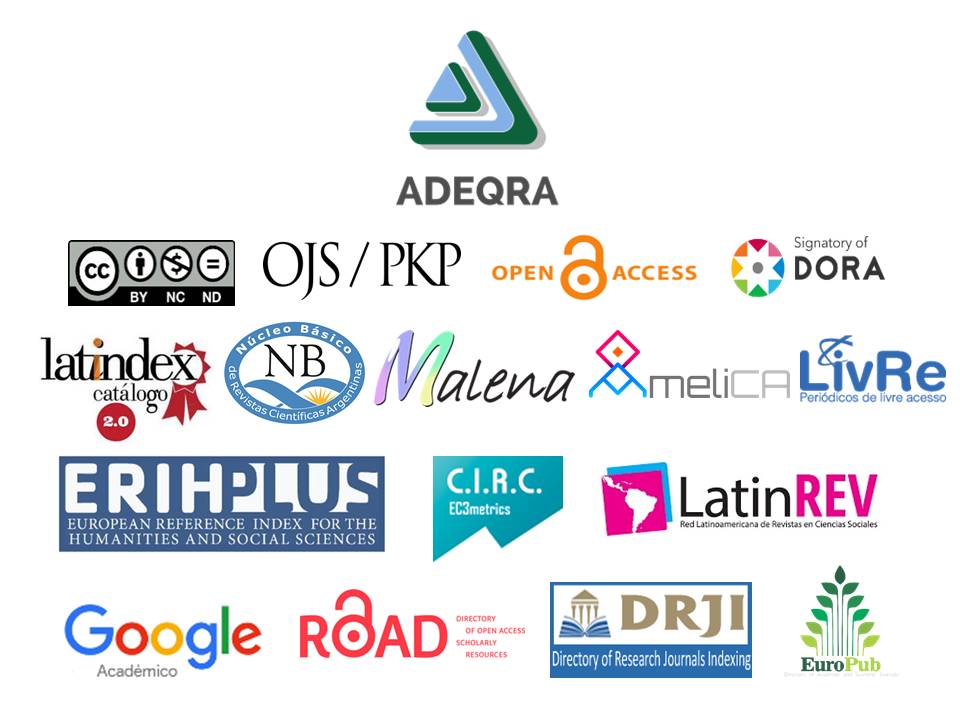Analysis of a university teacher’s speech in an admission Chemistry course
Keywords:
discourse analysis, teacher's speech, university admision, university chemistryAbstract
An analysis of the explanations in class of a university Chemistry teacher is presented here. The class is considered as a complex environment where the teacher uses the words as his/her resource in order to achieve the co-construction of meanings. This research was performed in an admission course of Universidad Nacional del Litoral programmed for freshmen students in Chemistry careers. A descriptive and interpretative study with a qualitative approach was performed. The oral explanations were transcribed into an electronic format and enriched with written materials and data obtained from the non-participant observation. Strategies of discourse analysis with ATLAS.TI 8 software were applied, attending Chemistry criteria. Grounded Theory was used in order to outline the categories. The results showed the predominance
of a teacher-centred conception about teaching, using monological descriptive expositions with medium semantic density. This study exhibited the discourse analysis value as a powerful tool to pose a reflection about strengths and weaknesses of educative designs that are in the hinge between school and high education.
References
Austin, J. L. (1982). Cómo hacer las cosas con palabras, Buenos Aires:Paidós
Candela, A. (2001). Corrientes teóricas sobre discurso en el aula. Revista Mexicana de Investigación Educativa, 6 (12).
Ciapuscio, G. E. (2011). De metáforas durmientes, endurecidas y nómades: Un enfoque lingüístico de las metáforas en la comunicación de la ciencia. Arbor, 187(747), 89–98.
Edwards, D. y Mercer, N. (1994). El conocimiento compartido. El desarrollo de la comprensión en el aula. (R. Alonso Trad., Primera reimpresión) Barcelona: Paidós.
Gilbert, J. (2005). Visualization: A metacognitive skill in science and science education. En: J. Gilbert. (Ed.), Visualization in Science Education (pp. 9-27) Dordrecht: Springer.
Glaser, B. G. y Strauss, A. L. (1967). Discovery of grounded theory: strategies for qualitative research, Chicago: Aldine.
Halliday, M.A.K (1994). An introduction to functional grammar. Londres: Edward Arnold. 2ª. Edición.
Johnstone, A. (1982). Macro and Micro Chemistry. School Science Review, 64, 377 – 379.
Johnstone, A. H. (1991). Why is science difcult to learn? Things are seldom what they seem. Journal of Computer Assisted Learning, 7, 75–83.
Johnstone, A. (1993). The development of Chemistry teaching. Journal of Chemical Education, 70(9), 701-705.
Johnstone, A. (2000). Teaching of Chemistry-Logical or Psychological? Chemistry Education: Research and Practice in Europe, 1 (1), 9-15.
Lemke, J. (2002). Enseñar todos los lenguajes de la ciencia: palabras, símbolos, imágenes y acciones. En: M. Benlloch (comp.) La educación en ciencias: Ideas para mejorar su práctica (159-186), Barcelona, Paidós.
Lorenzo, M. (2008). Destilación fraccionada de ideas condensadas. Una invitación al debate sobre la naturaleza de la química, Educación en la Química, 14 (1), 17-24.
Markic, S., y Childs, P. E. (2016). Language and the teaching and learning of Chemistry. Chemistry Education Research and Practice, 17(3), 434–438.
Odetti, H, Alsina, D, Cagnola, E. Güemes, R. Noseda, J. C. (2012). Química. Conceptos fundamentales. - 1a ed. 1a reimp. - Santa Fe: Ediciones UNL.
Pérez-Echeverría, M. P., Martí, E. y Pozo, J. I. (2010). Los sistemas externos de representación como herramientas de la mente. Cultura y Educación, 22(2), 133-147.
Quílez-Pardo, J., y Quílez-Díaz, A. M. (2016). Clasifcación y análisis de los problemas terminológicos asociados con el aprendizaje de la química: Obstáculos a superar. Revista Eureka, 13(1), 20–35.
Sánchez, E., y Rosales, J. (2005). La práctica educativa. Una revisión a partir del estudio de la interacción profesor-alumnos en el aula. Cultura y Educación, 17(2), 147–173.
Talanquer, V. (2011). Macro, submicro, and symbolic: The many faces of the Chemistry “triplet.” International Journal of Science Education, 33(2), 179–195. https://doi.org/10.1080/09500690903386435
Vanderveken, D. (2011). Towards a Formal Discourse Pragmatics. Florida Artifcial Intelligence Research Society Conference, Disponible en: http://www.aaai.org/ocs/index.php/FLAIRS/FLAIRS11/paper/view/2630/3024
Published
How to Cite
Issue
Section
License
Copyright (c) 2020 María Belén Manfredi, Héctor Santiago Odetti, María Gabriela Lorenzo

This work is licensed under a Creative Commons Attribution-NonCommercial-NoDerivatives 4.0 International License.



